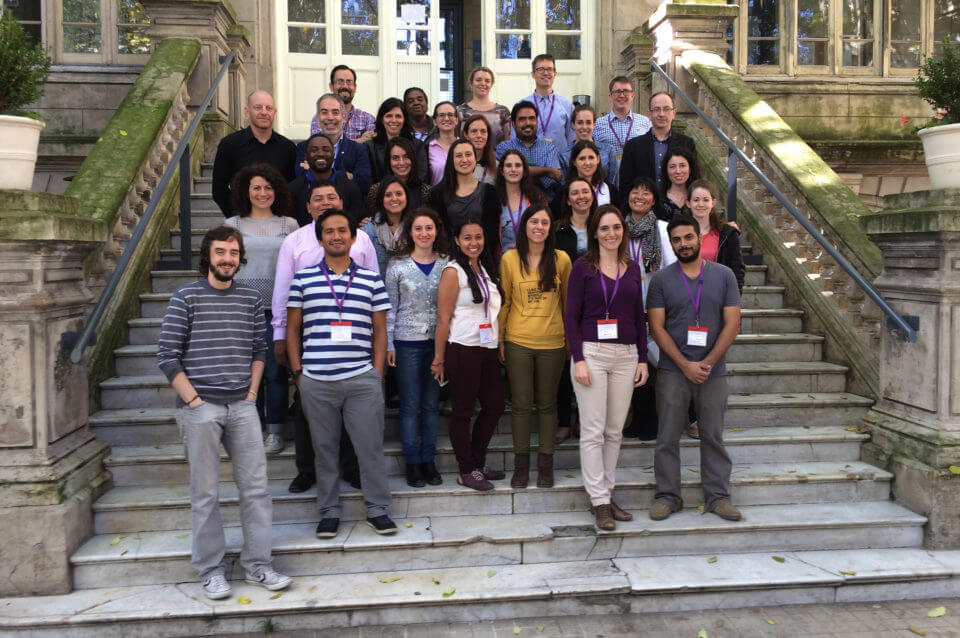Twenty students on an Overseas Course in Argentina not only developed their skills in pathogen surveillance but have also produced the programme’s first research paper!
The monitoring and surveillance of bacterial pathogens, which can cause large-scale outbreaks of human, animal or food-borne disease, plays a key role in efforts to try and minimise and control these events. By understanding the origin of disease outbreaks and their spread, public health officials are much better placed to prevent new occurrences and potentially save lives. Traditionally pathogen surveillance has used molecular and biochemical techniques to identify disease-causing bacteria, but new genomic technologies now have the potential to produce both accurate and rapid results.
The Genomics and Epidemiological Surveillance of Bacterial Pathogens course, part of the Advanced Courses and Scientific Conferences programme, was held earlier this year at the Administración Nacional De Laboratorios E Institutos De Salud (Malbran Institute) in Buenos Aires, Argentina; with instructors from the Wellcome Trust Sanger Institute, the PulseNet Latin America & Caribbean Network, and the University of St Andrews, amongst others. The course explored how genome sequence data can be used in combination with molecular methods to enhance disease surveillance and epidemiology, and if Next Generation Sequencing can truly rival the ‘gold-standard’ of pulsed field gel electrophoresis (PFGE)-based identification.

Students from across Latin America and the Caribbean used real-life data from two outbreaks of Shigellosis (a food-borne diarrhoeal disease) which occurred in the same province of Argentina in 2010 and 2011, and were suspected to be caused by the bacteria Shigella sonnei. Course students combined the available epidemiological and microbiological data with PFGE and whole genome sequencing to confirm the cause of the outbreak, and to analyse how related these two occurrences really were. Despite taking place in the same area and involving the same bacterial species, the students found that the two events were completed independent of each other, with genome sequence analysis demonstrating that they were caused by two relatively distantly related S.sonnei clones. This was somewhat unexpected given the proximity of the two outbreak locations, and indicated that multiple clones of S.sonnei are likely to be circulating in Argentina, several of which may have outbreak potential.
Additional sequence analysis provided enhanced insights into the antimicrobial resistance characteristics of the clones, detecting genes thought to be associated with resistance to the antibiotic cefpodoxime, one of the main treatments for Shigellosis in Argentina. Genes were also found that predicted resistance to additional antimicrobials not used in susceptibility testing. This indicates that drug resistance is a key area where genomic surveillance can bolster existing methods.
As course students and instructors were preparing a scientific paper to share these results, there was a timely reminder of the importance of disease surveillance when new outbreak of Shigellosis affecting over a thousand people near Buenos Aires was reported. Alongside the course, instructors and students had the opportunity to analyse the new outbreak data and share their findings with senior Institute staff, providing not only an enhanced learning experience, but also an additional showcase for genomic methods.
The publication which emerged from this course, to which all instructors and students contributed, is available to read via the preprint server bioRxiv, with a fully peer-reviewed version expected in 2017.